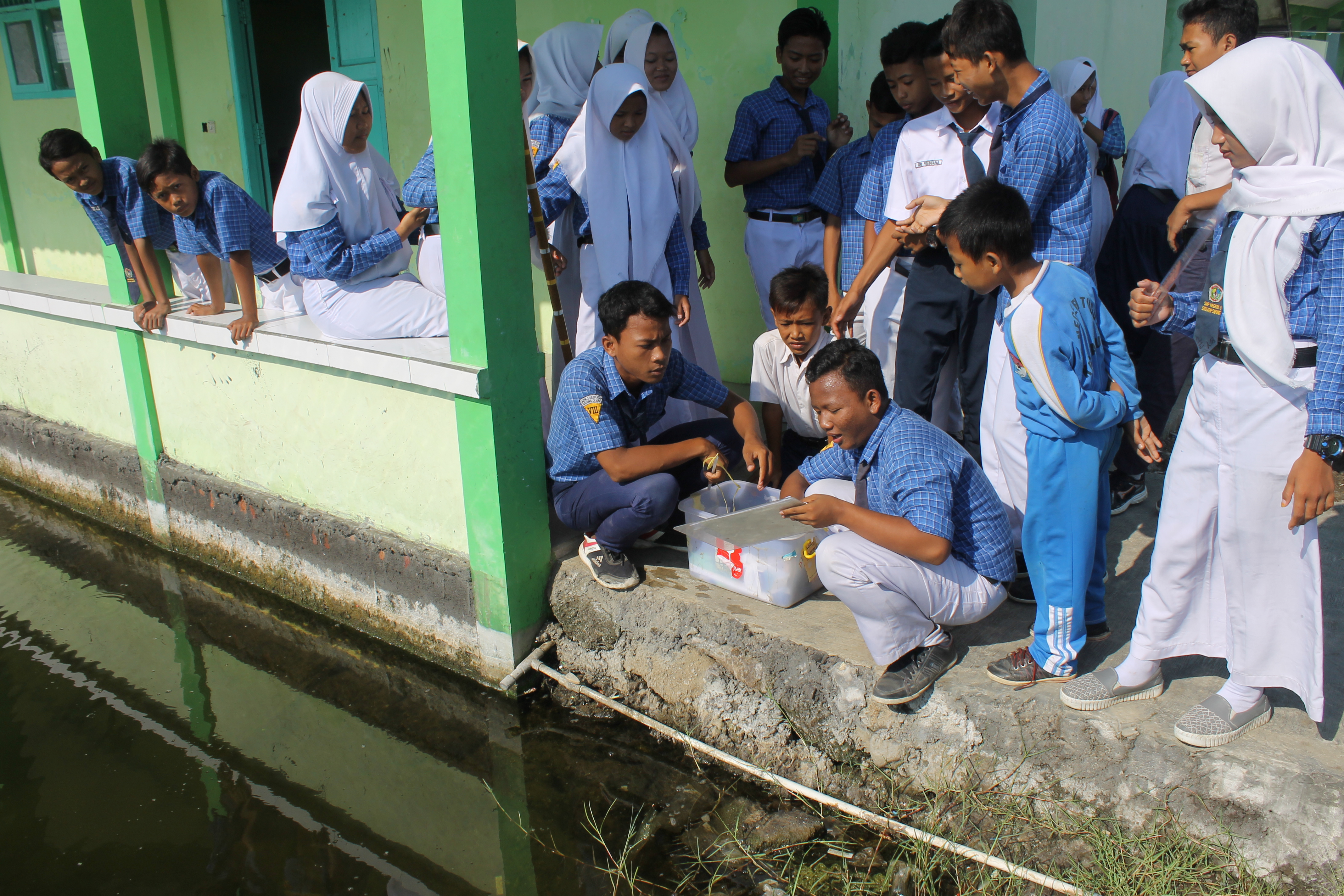
Tags
Water Quality Assessment for Aquaculture and Chemical Content of Mangrove – Based Food
Content Language : English

School is one of the facilities as a place of learning for students. The school becomes a place to sharpen scientific knowledge and soft skills of students. Research on water quality was carried out at SMPN 3 Satu Atap, Sayung District, Demak Regency. Researchers see the potential that exists in schools in the form of ponds that are not used and only become trash bins so that the potential is not utilized optimally. In addition, the researchers also tested the content of tannins and cyanide acids.
The results of measuring water quality, environmental conditions are still able to support aquaculture. Sediment types dominated by silt and medium - high organic matter are good parameters. The calculation of the abundance of phytoplankton and zooplankton also showed good results with found several genera such as Nitzschia, Navicula and Rhizosoleni for phytoplankton and Temora, Acartia, Lucifer and Nauplius for zooplankton.
The content of tannin and HCN in mangrove leaves in SDN 1 Bedono based on the results of the study must still be treated soaking before being made into mangrove chips. The leaves used are leaves of Avicennia marina, which local people usually call the name Api - Api or Brayo. Soaking for 12 hours is the most efficient treatment if it will do production for mangrove leaf chips. The content of the mangrove leaves tannins that have not been given treatment ranges from 47.03 - 47.46 gr / kg and with 12-hour immersion can reduce tannin levels to range between 30.08 - 30.49 mg / kg. While for HCN content without immersion ranged from 0.2490 - 0.2592 mg / kg and soaking for 12 hours can reduce the content to 50% with values ranging from 0.819 - 0.952 mg / kg. Processing techniques with frying and giving flour on mangrove leaves with soaking for 12 hours to be processed into chips are also able to reduce the rejuvenation of tannin and cyanide content.
Attachments

This work is licensed under a Creative Commons Attribution-NonCommercial-NoDerivatives 4.0 International License.
